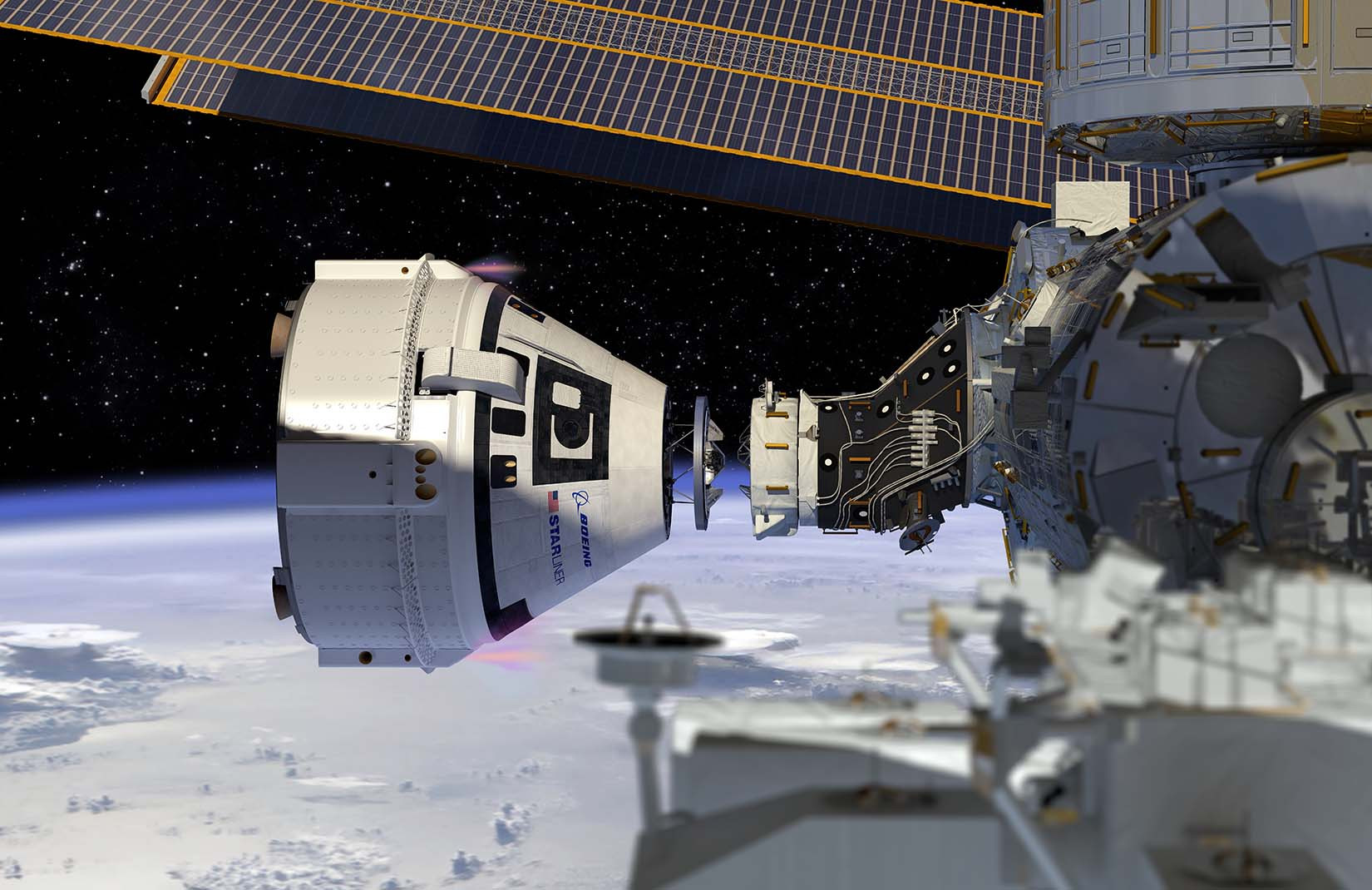Now it’s Boeing’s turn to prove the safety of its crew capsule design
By Cat Hofacker|December 19, 2019
Boeing, NASA mark last milestone before crewed flight test
The crew aboard the International Space Station will have a visitor for the Christmas season, but it’s not Santa Claus.
It’s the Boeing CST-100 Starliner crew capsule, which is scheduled to blast off from Space Launch Complex 41 at Cape Canaveral Air Force Station in Florida on Friday morning. Someday, maybe in 2020, a capsule like this one will ferry astronauts to the space station under NASA’s Commercial Crew program. But for the capsule’s first flight, the only passenger will be a test dummy named Rosie, who is catching a ride up with 270 kilograms of cargo.
“We’re looking forward to a really short, quick and successful mission,” said John Mulholland, Boeing’s Commercial Crew program manager, during a pre-launch press conference Tuesday at NASA’s Kennedy Space Center.
NASA TV will stream the orbital flight test on its website, with liftoff scheduled for 6:36 a.m. Eastern Standard Time on Friday aboard a United Launch Alliance Atlas V. From there, the spacecraft will dock with ISS at about 8:30 a.m. EST Saturday and spend about a week at the station before undocking and returning to Earth.
“It gives us an opportunity to really see how the integrated system works through all phases of flight,” said NASA Commercial Crew manager Kathy Leuders during the press conference.
Starliner’s performance isn’t the only thing flight engineers will be watching during the launch. For ULA, the joint Boeing-Lockheed Martin launch venture, Friday’s flight will debut the version of the Atlas V design that’s been modified to launch Starliner and its future crew.
To give Atlas the necessary thrust to boost Starliner to low-Earth orbit, ULA engineers installed a dual-engine Centaur, a more powerful version of the upper stage on other Atlas rockets. This is the first time an Atlas V will have the upgraded Centaur, but the dual-engine configuration has flown on other Atlas variants. The extra engine “flattens out the [rocket’s] trajectory,” said John Elbon, ULA’s chief operating officer, which means lower G-forces on the crew in case of an abort.
Another addition is the EDS, short for Emergency Detection System. These two computers located near the top of Centaur monitor the accelerations and pressures on the rocket during launch and can command an abort to pull Starliner away from an exploding or fizzling Atlas V. During the Friday launch, the system will be in “passive mode,” Elbon said, “but when we have crew on board, EDS will be able to detect if there’s any issues with the rocket and let the Starliner know so an abort can be executed.”
If all goes as planned, Starliner and Rosie should land in the western United States about 6 a.m. EST on Dec. 28 softly under parachutes, with sensors on the capsule and test dummy recording survivable G-forces. The next step for Boeing is a crewed test flight with three astronauts to ISS, the date for which will be set after the data from Friday’s test is reviewed.
NASA expects Boeing and fellow Commercial Crew contractor SpaceX to begin flying crews in the first half of 2020, two years and a few months after the original 2017 deadline. NASA hasn’t announced which company will launch first. As it stands, the SpaceX crewed demo is scheduled to last about a week, while NASA has approved the three astronauts that will be aboard for Starliner’s crewed flight test for a six-month stay.
“For us, it wasn’t about getting to the launchpad quickly,” Mulholland said. “It was about getting to the launchpad with a safe system that could launch over and over again,” he said, referring to the fact that this particular capsule will be used for Starliner’s first operational mission.
SpaceX launched a Crew Dragon to ISS in March without a crew, but still has one more test ahead of its crewed launch: an in-flight abort test meant to prove the Crew Dragon design can keep crew safe in the event of a launch failure. A Crew Dragon capsule will be launched atop a Falcon 9 as if it were headed to ISS. After about 90 seconds, the SuperDraco thrusters on the sides of the capsule will propel the spacecraft away for a soft parachute descent into the Atlantic Ocean. That test is scheduled for Jan. 11, 2020, from Kennedy Space Center, Florida.
Boeing conducted its abort test in November. NASA declared the results “acceptable” although one of three parachutes did not open.
Related Topics
Human Spaceflight





